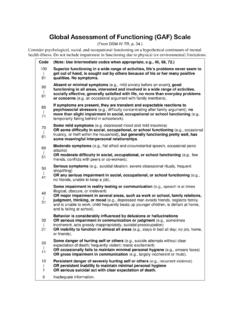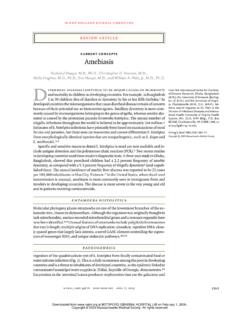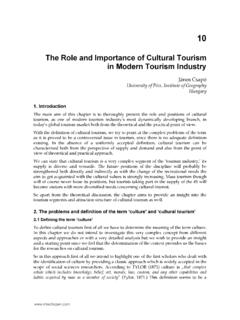Transcription of Racial Discrimination in the Workplace - msu.edu
1 Race Discrimination 1. Running Head: RACE Discrimination IN THE Workplace . Race Discrimination in the Workplace . Isis H. Settles, NiCole T. Buchanan, & Stevie C. Y. Yap Michigan State University Appearing in M. A. Paludi, C. A. Paludi Jr., & E. DeSouza (Eds.), Praeger Handbook on Understanding and Preventing Workplace Discrimination . Westport, CT: Praeger Publishers. Released December 2010. Race Discrimination 2. Chapter Overview Title VII of the Civil Rights Act (1964, 1991) declared that employers must maintain a Workplace free of Discrimination based on sex, race, color, religion, or national origin. As a result, organizations have attempted to reduce Racial Discrimination , of which Racial harassment is a subtype.
2 Nevertheless, Racial Discrimination and harassment remain pervasive throughout the Workplace , with 40% to 76% of ethnic minority employees experiencing at least one unwanted race-based behavior within a 12- to 24-month period (Harrell, 2000; Schneider et al., 2000). Racial Discrimination has serious consequences, including negatively impacting psychological, physical and work outcomes (Barnes, Mendes de Leon, Lewis, Bienias, Wilson, & Evans, 2008;. Darity, 2003; Forman, 2003; Sellers, Caldwell, Schmeelk-Cone, & Zimmerman, 2003). In this chapter, we will provide an overview of Racial Discrimination in the Workplace as it is defined legally in the United States, discuss individual and organizational factors that increase the likelihood that Racial Discrimination will occur, and review the costs of Racial Discrimination to targeted individuals and the organizations within which they work.
3 Legal Definitions of Racial Discrimination Protection against Workplace Racial Discrimination was formalized with the passage of Title VII of the Civil Rights Act (1964, 1991), which prohibited workplaces with at least 15. employees from using sex, race, color, religion, or national origin when making employment decisions. Title VII also created the Equal Employment Opportunity Commission (EEOC) to investigate claims of Discrimination . As a part of the ban against Racial Discrimination , Title VII. specifies several race-related factors that cannot be used in employment decisions. Namely, employers may not deny individuals equal employment opportunities as a result of their perceived and/or actual Racial group membership, race-related features ( , hair texture or skin Race Discrimination 3.)
4 Color), relationships ( , marriage) with members of a particular race, or the employer's beliefs about individuals in certain Racial groups. Although enacted to protect Racial and ethnic minorities (and other protected groups), these guidelines extend to people of all races. Title VII also prohibits discriminatory employment practices. First, employers may not discriminate in the recruitment, hiring, promotion and retention of employees. This protection requires the employer to use the same job requirements for all individuals, and to ensure that these requirements do not exclude individuals in a particular Racial group. Yet, research shows that discriminatory practices persist in these domains and manifest in a variety of ways.
5 For example, Bertrand and Mullainathan (2004) found that in the initial review of resumes, applicants were already at a disadvantage if their names suggested they were Black. The researchers sent resumes with similar qualifications in response to 1,300 employment advertisements. They changed only the name of the applicant (using a name perceived as White, such as Greg Baker, or a name perceived as Black, such as Jamal James) and found that applicants with White sounding names were 50% more likely to receive a callback than applicants with Black sounding names. When they manipulated the quality of the resumes, higher quality White applicants were 30% more likely to receive a callback than lower quality White applicants, whereas Black applicants with higher quality resumes only received an 8%.
6 Boost over lower quality Black applicants. Thus, this study clearly demonstrates that Racial Discrimination may occur at the hiring stage, and potentially the recruitment stage, before individuals have an opportunity to demonstrate their potential. Racial Discrimination is also evident in promotion practices, such as performance evaluations. An analysis by Stauffer and Buckley (2005) showed that White supervisors gave White workers substantially higher performance ratings than Black workers, compared to Black Race Discrimination 4. supervisors rating the same workers. Interestingly, they also found that Black supervisors demonstrated smaller, but similar biases in favor of White workers. Overall, the results of this body of research suggest that there is Racial bias and Discrimination in the supervisor ratings of Black employees, although the source of this bias is unclear.
7 Additionally, in a 3 year period early in their career, Black workers with similar credentials were dismissed from their jobs 33%. more frequently than White workers (Wilson, 2005). To the extent that evaluations of worker performance and retention decisions are influenced by factors unrelated to actual performance, the organization is negatively affected in several ways. Employees that are not performing as well as they might appear to be given an artificial lift while the better performance of others is being overlooked. Over time, this may impact promotion decisions (promoting less qualified employees due to overly positive evaluations) and retention, as underappreciated employees are more likely to leave the organization.
8 Second, Title VII prohibits employers from discriminating in compensation, benefits or the conditions of employment ( , the type of work assignments made). Although disparities in wages have decreased over time, they remain significant. Averaging across all working adults, White men earn a third more than Black men and twice as much as Black women (Kim, 2007). After controlling for factors thought to influence earnings ( , age, education, part-time status, children, marital status, etc), up to a 30% wage disparity exists across Racial groups (Bishaw &. Semega, 2008; Kim, 2007). Additionally, these disparities may be exacerbated over an individual's lifetime. Maume (2004) analyzed a longitudinal panel sample and found that Black workers earned significantly less than White workers, controlling for a number of individual and job related variables.
9 Further, the size of this wage gap was greater for older cohorts of workers compared to younger ones, and as individuals aged, the wage gap increased for all cohorts. The Race Discrimination 5. increase in wage disparity within cohorts reflects differences in starting wages among ethnic groups (which are exacerbated over time because raises are often a percentage of one's base salary) as well as persistent employer Discrimination in future compensation and promotion practices over individuals' careers (Maume, 2004). Such Discrimination may be responsible for up to a 15% loss in earnings within a ten-year period (Darity, Guilkey & Winfrey, 1996;. Gottschalk, 1997; Rodgers & Spriggs, 1996). Third, Title VII prohibits employers from segregating employees who belong to a particular Racial group or classifying the type of work employees can do because of their race.
10 For example, physically or geographically isolating Asian employees from other employees or customers, and/or prohibiting Asian employees from holding certain positions would constitute Title VII violations. There are four theories for why Racial segregation occurs in the Workplace : 1) ethnic minorities have skill deficits compared to White employees, 2) Racial groups prefer to be segregated or choose occupations that are similar to other members of their ethnic group, 3). economic and organizational structures result in race segregation (unintentionally), and 4). individuals' who make employment and placement decisions engage in race-based stereotyping. Kaufman (2002) compared the four explanations for employment Racial segregation and determined that Racial stereotyping by employers best explained Racial segregation across almost two thousand labor sectors.














